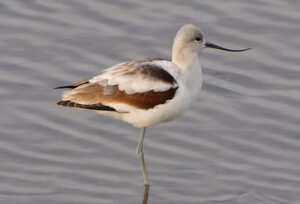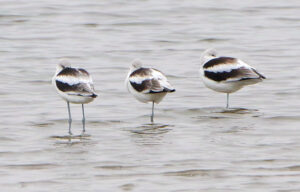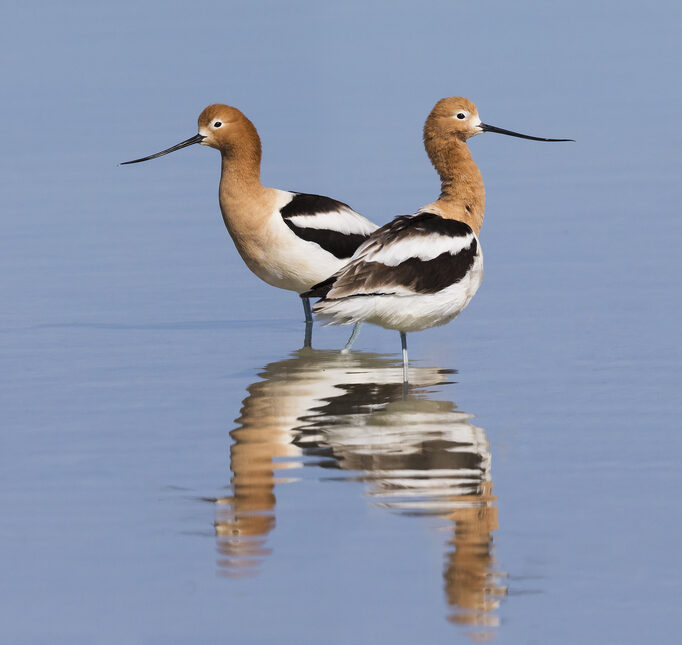American Avocet, Recurvirostra americana
Bill Rowe
One of our largest shorebirds, the handsome American Avocet dominates any pool or mudflat with its bold color patterns and loud ringing calls. It is unusual, too, in being more western than northern in its breeding range: while its cousins are passing through on their way south from the arctic tundra, or from wetlands within the conifer forest of Canada, the avocets we see in the Midwest have probably come from prairie marshes and alkali lakes of the northern Great Plains and intermountain valleys. This means that on a typical summer vacation out west, you might very well get to observe avocets with their nests and young—something you can’t easily do with most other shorebirds unless you are ready for the rigors of the far north. Moreover, their southbound journey will not be nearly as long as, say, that of the Pectoral Sandpipers that proceed far down into South America. Instead, avocets mostly take up winter residence in Mexico or the Caribbean, or along the southern coasts of the United States in Florida, Texas, and California. Worldwide, there are four species of avocet, all in the genus Recurvirostra (referring to their upturned bills) and all similar in size and structure, each with its own distinctively striking plumage. The other three species occur in South America, Eurasia, and Australia.
IDENTIFICATION: An avocet is immediately recognizable, even at long distance, with its unique shape and its black and white body pattern. The long, very thin bill is gently curved upward in males, more strongly “kinked” upward in females. In breeding plumage, the head and neck are a rich rusty-tan color; the only change in nonbreeding plumage is that the tan color is exchanged for a pale gray, no longer contrasting much with the white underparts. The legs are long and bluish.
ST. LOUIS STATUS: Avocets are uncommon but fairly regular, showing up singly or in small groups during both migration seasons. In fall, they may arrive as early as July but become most frequent in October and may linger well into November.
Learn more and listen to the calls of American Avocets here.


Nonbreeding female
Photo Credit: Al Smith
Nonbreeding birds; note black and white pattern, unique at any distance.
Photo Credit: Al Smith




